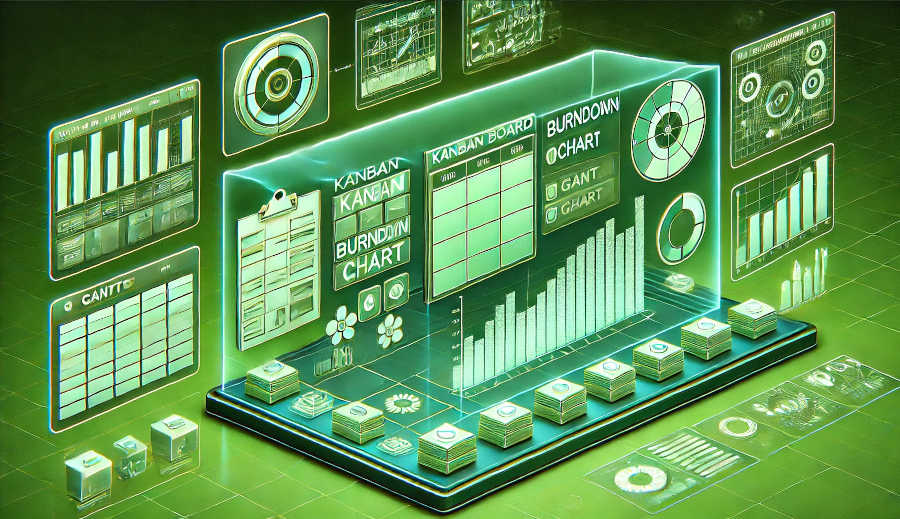The importance of stand-up meetings lies in their ability to create a rhythm of accountability and transparency within the team. Unlike traditional meetings that often devolve into lengthy discussions or unstructured debates, stand-up meetings are concise and action-oriented. They encourage team members to think critically about their tasks and identify potential challenges early, allowing for timely interventions. Moreover, the regularity of these meetings—typically held daily—ensures that issues are addressed promptly, preventing them from escalating into larger problems. This proactive approach not only saves time but also fosters a culture of continuous improvement, where team members are empowered to take ownership of their work and collaborate effectively.
Despite their simplicity, stand-up meetings require careful planning and execution to maximize their impact. Teams must establish clear guidelines, such as time limits, meeting agendas, and participation rules, to ensure that the meetings remain focused and productive. Additionally, the role of the facilitator—often the project manager or team lead—is crucial in maintaining the meeting’s structure and encouraging open communication. By leveraging the principles of agile project management and tailoring stand-up meetings to the team’s specific needs, organizations can unlock their full potential and achieve higher levels of efficiency and collaboration.
The Role of Stand-Up Meetings in Team Alignment
Stand-up meetings play a pivotal role in aligning team members around shared goals and priorities. In fast-paced work environments, it’s easy for individuals to become siloed or lose sight of the bigger picture. Regular stand-up meetings provide a platform for team members to share updates, clarify expectations, and ensure that everyone is working toward the same objectives. This alignment is particularly important in cross-functional teams, where members from different departments or disciplines must collaborate closely to achieve project success. By fostering a sense of unity and shared purpose, stand-up meetings help to break down barriers and promote a collaborative mindset.
Another key benefit of stand-up meetings is their ability to surface potential misalignments or misunderstandings early in the project lifecycle. When team members openly discuss their progress and challenges, it becomes easier to identify gaps in communication or conflicting priorities. For example, if one team member is working on a task that depends on another’s input, the stand-up meeting provides an opportunity to address any delays or bottlenecks before they impact the overall timeline. This proactive approach minimizes the risk of last-minute surprises and ensures that the team remains on track to meet its deadlines. Furthermore, the transparency created by these meetings fosters trust and accountability, as team members are encouraged to take responsibility for their contributions.
Finally, stand-up meetings serve as a valuable tool for reinforcing the team’s commitment to its goals. By regularly reviewing progress and celebrating small wins, team members are reminded of the value of their efforts and motivated to maintain momentum. This sense of achievement is particularly important in long-term projects, where it can be challenging to stay focused and engaged over extended periods. Stand-up meetings provide a consistent reminder of the team’s progress and the impact of their work, helping to sustain motivation and drive continuous improvement. In this way, they contribute not only to team alignment but also to long-term project success.
Enhancing Communication and Collaboration
Effective communication is the backbone of any successful team, and stand-up meetings are designed to facilitate this by providing a structured yet informal setting for information exchange. Unlike traditional meetings, which often involve formal presentations or lengthy discussions, stand-up meetings encourage brief, to-the-point updates that focus on actionable insights. This approach ensures that everyone has a clear understanding of the team’s current status and can adjust their priorities accordingly. Additionally, the informal nature of these meetings fosters open dialogue, making it easier for team members to ask questions, share ideas, and offer support.
Collaboration is another area where stand-up meetings can make a significant impact. By bringing team members together on a daily basis, these meetings create opportunities for spontaneous collaboration and problem-solving. For instance, if a team member encounters an obstacle during their work, they can quickly seek advice or assistance from their colleagues during the stand-up meeting. This real-time interaction not only accelerates the resolution of issues but also strengthens the bonds between team members, as they learn to rely on each other’s expertise and insights. Over time, this collaborative mindset becomes ingrained in the team’s culture, leading to more innovative solutions and a higher level of collective performance.
Moreover, stand-up meetings help to break down hierarchical barriers and promote inclusivity within the team. In many organizations, junior team members may hesitate to voice their opinions or concerns in formal settings, fearing criticism or dismissal. Stand-up meetings, with their emphasis on brevity and equality, provide a safe space for all team members to contribute, regardless of their role or experience level. This inclusivity not only enhances communication but also ensures that diverse perspectives are considered, leading to more well-rounded decisions and a stronger sense of team cohesion. By fostering an environment of mutual respect and collaboration, stand-up meetings empower teams to achieve their full potential.
Overcoming Challenges in Stand-Up Meetings

While stand-up meetings offer numerous benefits, they are not without their challenges. One common issue is the tendency for these meetings to become repetitive or lose their focus over time. When team members simply go through the motions without engaging deeply, the meetings can devolve into a routine checklist exercise, losing their value as a tool for improving efficiency. To prevent this, it’s important to periodically reassess the format and content of the meetings, ensuring that they remain relevant and impactful. For example, teams can experiment with different discussion formats or incorporate new elements, such as rotating facilitators or adding a brief reflection on lessons learned.
Another challenge is managing the balance between brevity and thoroughness. While stand-up meetings are intended to be concise, there is a risk of oversimplifying complex issues or glossing over important details. To address this, teams should establish clear guidelines for what constitutes a meaningful update and encourage members to focus on the most critical aspects of their work. Additionally, it’s important to create opportunities for follow-up discussions outside of the stand-up meeting, allowing team members to delve deeper into specific topics as needed. This approach ensures that the meetings remain efficient while still providing space for in-depth exploration when necessary.
Finally, cultural and organizational factors can pose challenges to the successful implementation of stand-up meetings. In some cases, team members may be resistant to the idea of daily check-ins, viewing them as an unnecessary burden or a disruption to their workflow. To overcome this resistance, it’s essential to communicate the purpose and benefits of stand-up meetings clearly and consistently. Leaders should also model the desired behavior by actively participating in the meetings and demonstrating their commitment to the process. Over time, as team members experience the positive impact of these meetings firsthand, they are likely to embrace them as a valuable part of their routine.
Conclusion
Stand-up meetings are a powerful tool for improving team efficiency, but their success depends on thoughtful planning and execution. By fostering alignment, enhancing communication, and promoting collaboration, these meetings help teams stay focused, address challenges proactively, and achieve their goals more effectively. However, to fully realize their potential, teams must be willing to adapt and refine their approach, addressing common challenges such as repetition, brevity, and resistance. When done right, stand-up meetings can transform the way teams work together, creating a culture of transparency, accountability, and continuous improvement.
The key to maximizing the impact of stand-up meetings lies in their integration into the broader project management framework. They should not be seen as an isolated activity but as part of a holistic approach to team management, complemented by other practices such as sprint planning, retrospectives, and regular feedback sessions. By aligning stand-up meetings with the team’s overall objectives and workflows, organizations can ensure that they contribute meaningfully to project success. Ultimately, the value of stand-up meetings lies in their ability to bring teams closer together, fostering a sense of unity and shared purpose that drives performance and innovation.
In conclusion, stand-up meetings are more than just a daily check-in—they are a catalyst for team efficiency and collaboration. By providing a structured yet flexible platform for communication and problem-solving, these meetings enable teams to navigate complex projects with confidence and agility. As organizations continue to embrace agile methodologies and seek ways to enhance productivity, stand-up meetings will remain an essential tool for achieving these goals. With the right mindset and approach, teams can harness the full potential of stand-up meetings to deliver exceptional results and create a culture of excellence.
FAQ
1.How long should a stand-up meeting last?
A stand-up meeting should ideally last no longer than 15 minutes. The goal is to keep the meeting concise and focused, ensuring that team members can quickly share updates and identify any obstacles without derailing their workflow.
2.What if a team member has nothing to report during the stand-up meeting?
If a team member has nothing to report, they should still participate by acknowledging their status and confirming that they are on track. This helps maintain transparency and ensures that everyone remains engaged in the process.
3.Can stand-up meetings work for remote teams?
Yes, stand-up meetings can be highly effective for remote teams when conducted via video conferencing tools. The key is to maintain the same structure and discipline as in-person meetings, ensuring that all team members have an opportunity to contribute and stay aligned.
ARTICLE TITLE :How to improve team efficiency through stand-up meetings ,AUTHOR :ITpmlib

















